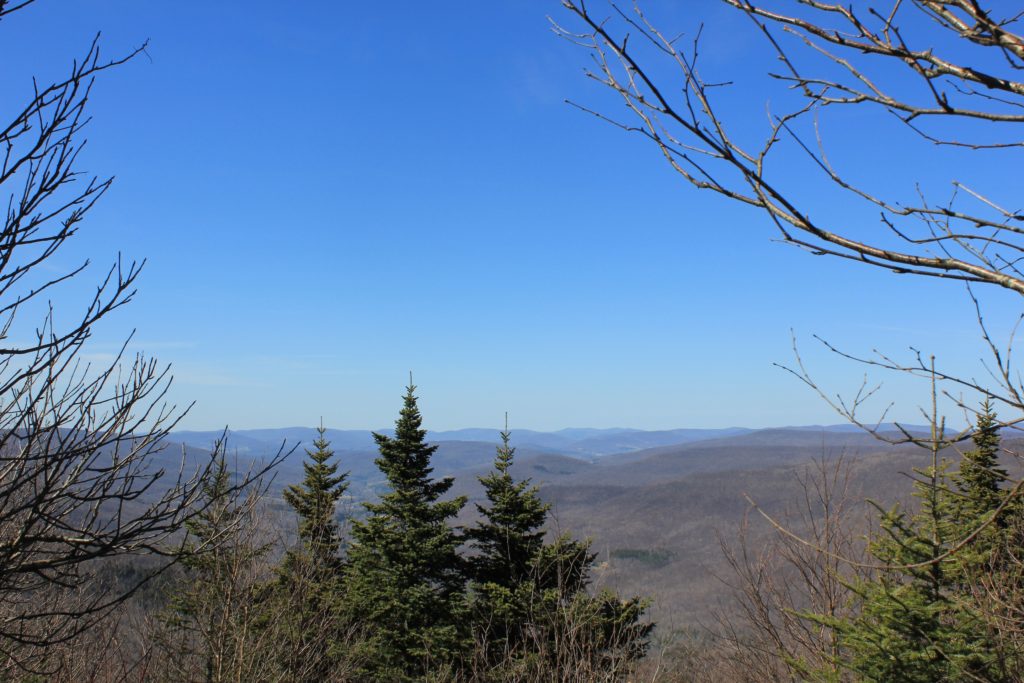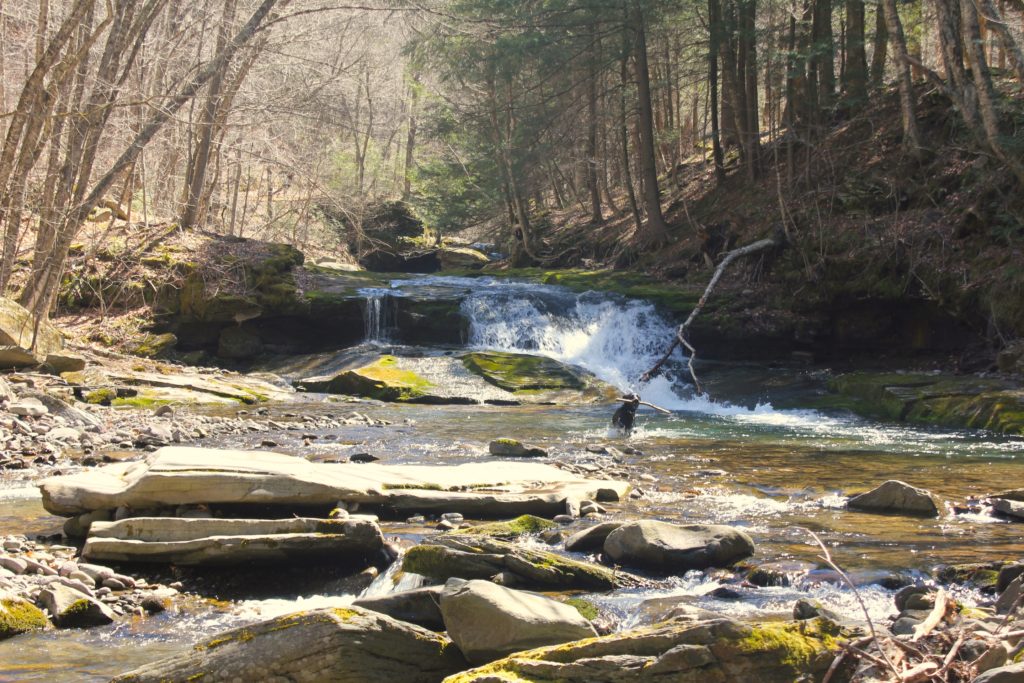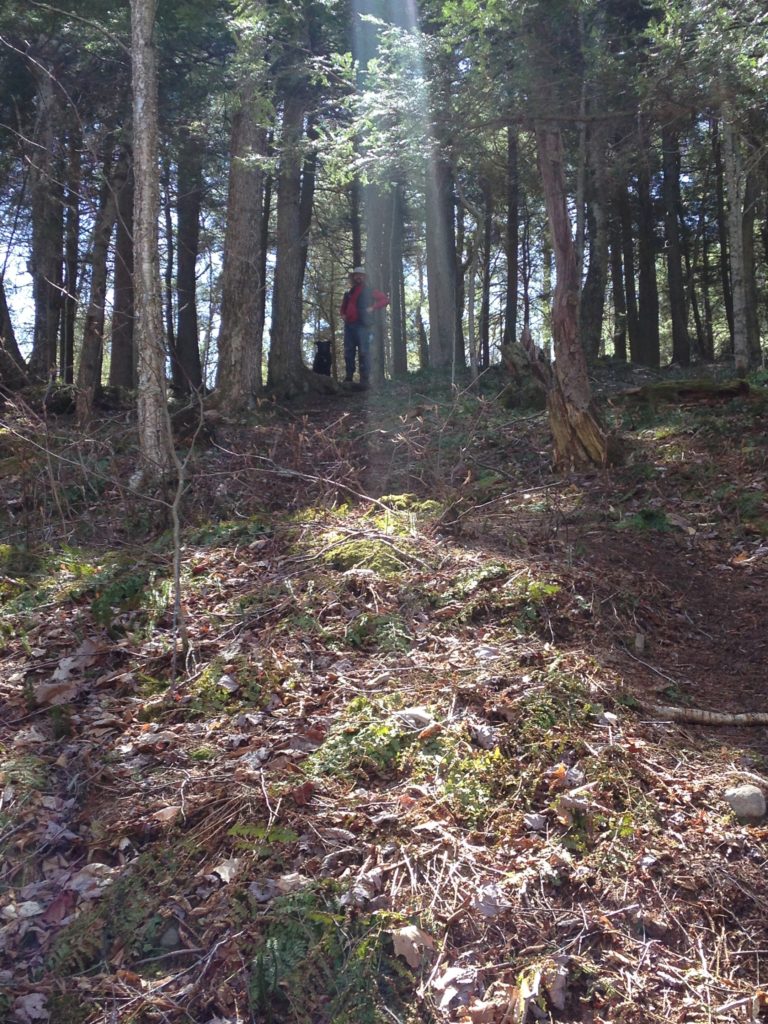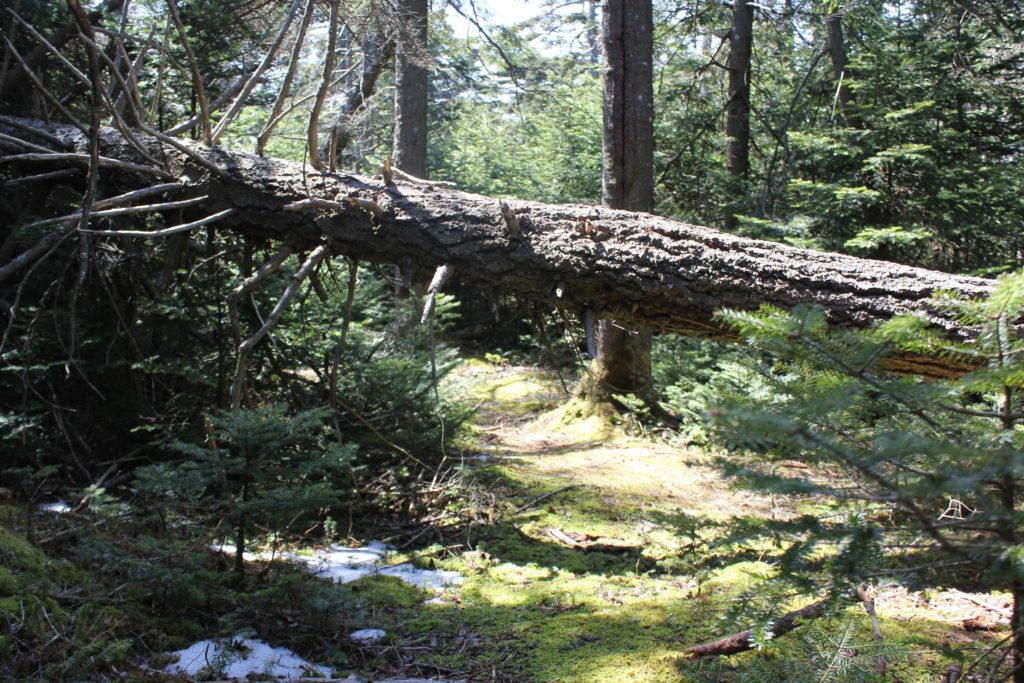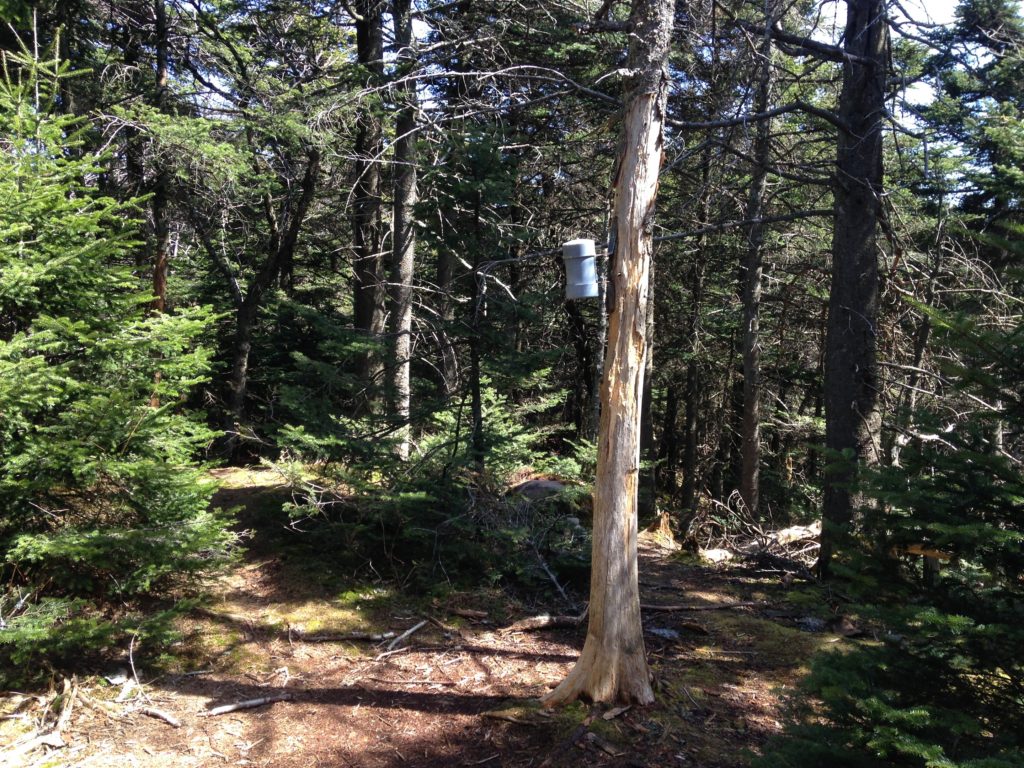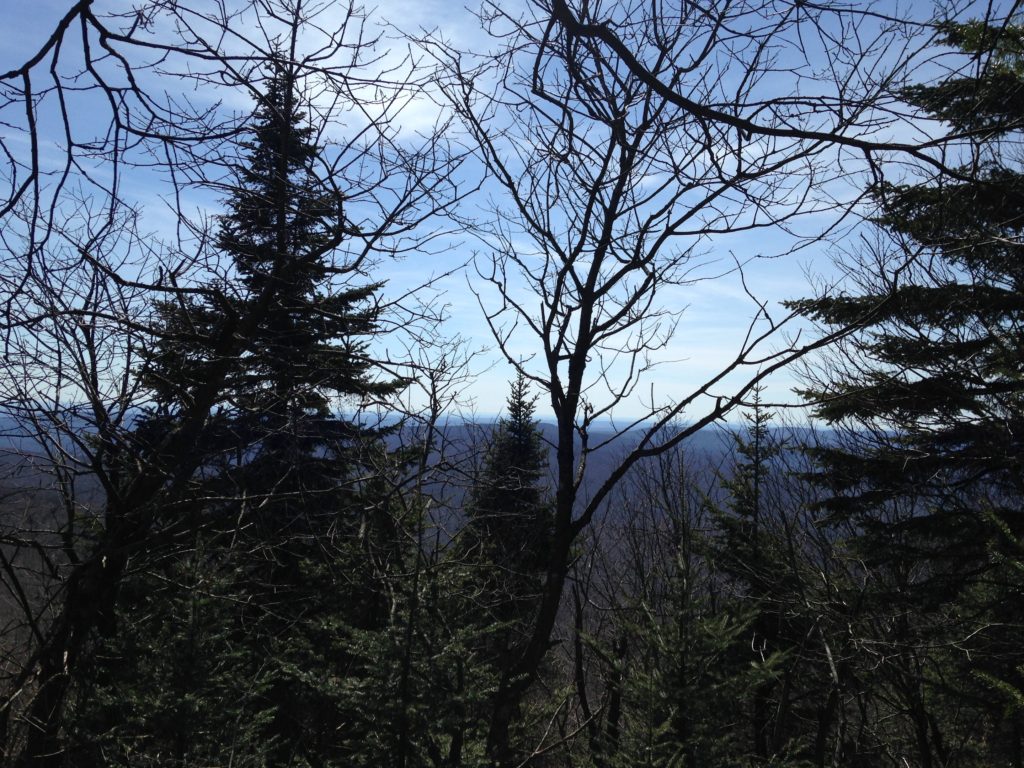At 3860 feet high, Doubletop is the 9th highest peak in the Catskills and it’s a Catskills Camel, a double-humped peak and those humps are capped with dense thickets of fragrant evergreens. Once again, there’s a magical, mossy wonderland at the summit, and some ice and snow, but it’s doubly hard work getting up there.
According to the bylaws of the Catskill 3500 Club “there must be at least a 250 drop between the peak and any other peak on the list, or the peak must be at least half a mile from any other peak on the list”. So Doubletop’s two peaks are therefore combined.
It’s also a bushwhack with no trail, but it’s accessible from a number of directions. Experienced hikers approach Doubletop from nearby Graham Mountain, the Hardenburgh trail, Big Indian or Fir. The hike is mostly on private land, so you must obtain permission to hike this peak and you can find the details for that at the Catskills 3500 Club here.
There’s not much in the way of online information about the hike to Doubletop, so one must rely on a map and compass, or a guide. In a mostly southerly direction from the Seager Trail, it is straight up literally being almost horizontal in the beginning. Leaving the Seager Trail is always a miserable affair because it has everything you want in a trail: waterfalls, flat areas for picnics and a refreshing swimming hole. Leaving it to hike south towards Doubletop is even more painful because of its immediate upward trajectory: a thigh-buster from the beginning and troublesome because of its lack of trail.
We took the Seager Trail for about a mile until we arrived at the bridge at which there is a bench to rest just after the first large waterfall. Across from the bench there is a dog-sized, wooden bear figure nestled just off-trail, up against a tree, and just past the bear figure is the trail going in a roughly southerly direction. Doubletop seems to be a popular mountain, because even though it’s an unmarked trail, you can see where many feet have gone before. For the first few miles, there is a dirt track in which the fallen leaves have literally been trodden into dust by many hiking boots, but it’s easy to lose the trail and after a mile or so, you’ll be faced with large rocky outcroppings over which you have to clamber. This will be even more annoying and you will reminisce over the thigh-busting dirt track.
We studied the map beforehand and got our bearings immediately by identifying adjacent peaks, all but one of which we had already climbed. (Plus, we’ve hiked the Seager Trail many times and have observed other hikers en route to Doubletop.) It’s essential that you get your bearings in this way and it’s much easier to do when the leaves are off the trees. As we rose in elevation, we had Eagle on our left disappearing behind us at our 7 o’clock and Big Indian was visible at our 11 o’clock. As we rose further, Graham popped up at our 2 o’clock. Doubletop was ahead, due south, and as we ascended to the top we were obviously between Big Indian on our left and Graham on our right. Plus, I forgot to mention that Doubletop kept moving, but we got there eventually.
There is a twin-engine plane wreck south of Doubletop and two views, but exhaustion made me beat a hasty retreat. Inexperienced hikers should not do this hike without map-reading training or a guide. There’s a cannister at the summit that contains a sign-in book. After 26 Catskills peaks under my belt, this has to be the most difficult thus far, taking more than five hours.
